Smeg EGF03 Espresso Machine review – This is why we love this Smeg bean to cup pick
If you’re looking for a statement coffee machine this is it
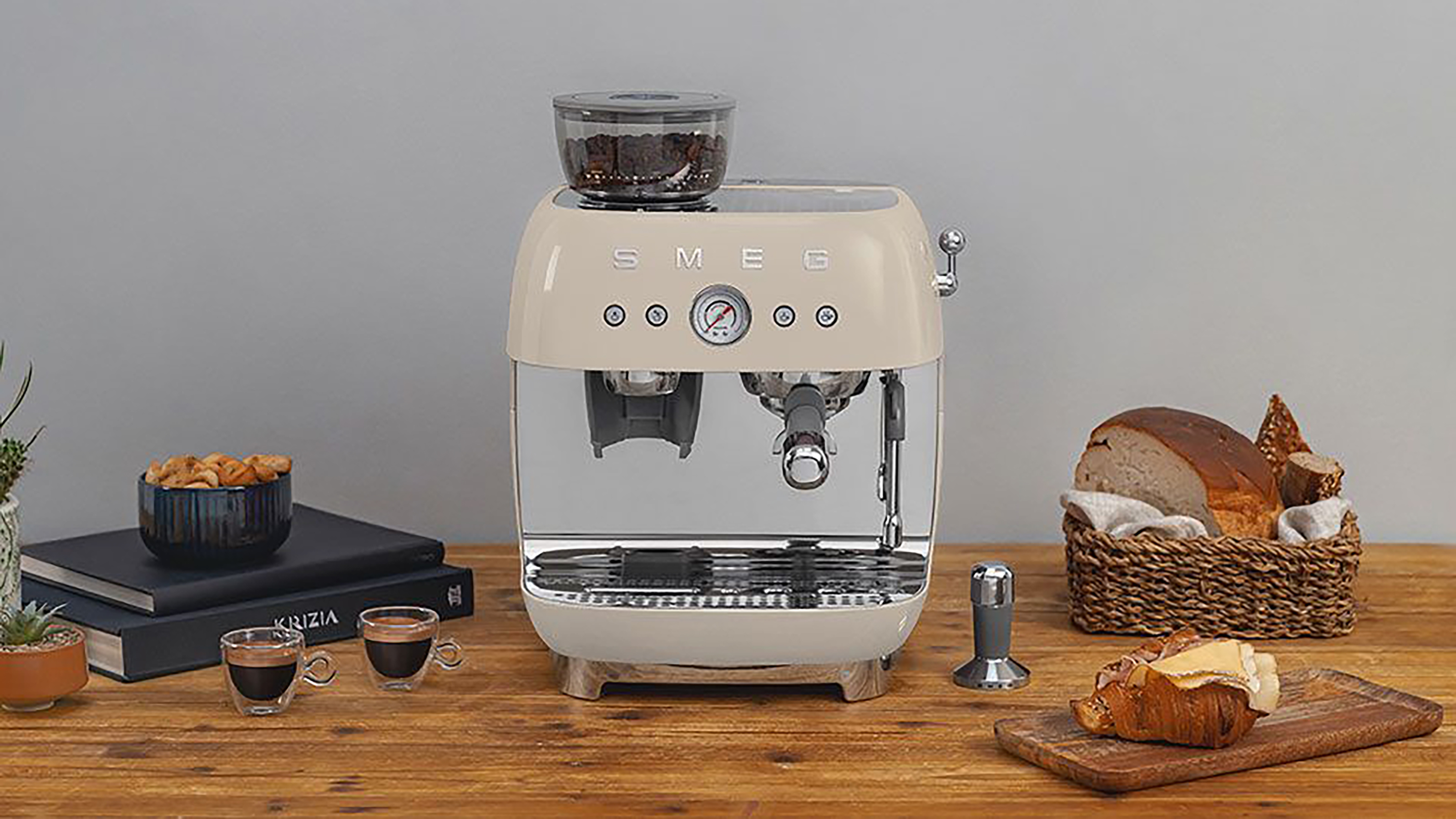
I was half expecting the Smeg EGF03 Espresso Machine to be a case of style over substance. But instead, I enjoyed rich, punchy espressos with an impressive thick crema, all made with freshly ground beans. Its bold retro curves add a lovely feature to the kitchen too, but it comes with a steep price tag.
-
+
Built in bean grinder
-
+
15 stage grind size adjustment
-
+
Well built and weighty accessories
-
+
Large removable water tank
-
+
Steam wand has two froth levels
-
+
Dispenses hot water
-
-
Expensive and bulky
-
-
Reducing grind size reduces amount of coffee that gets ground
Why you can trust Ideal Home

Smeg is a brand loved by many for its bold retro style appliances, but up until now there’s only been one, pretty basic espresso machine in the iconic 50s style range. So this new espresso machine with built-in grinder increases the range of the best coffee machines from the brand if you're already a fan of the curvy look.
The unimaginatively named EGF03 espresso machine and grinder is, unlike its name, anything but dull. This is a big, statement coffee machine that stands out from the crowd and it’ll certainly be a talking point in any kitchen - especially if you choose one of the brighter colours.
I use my usual espresso machine daily to make a couple of morning coffees for myself and my husband. The coffees we enjoy are cappuccinos, flat whites, and even a simple double espresso, depending on our mood. I’ve long been toying with the idea of upgrading to a machine with a built-in grinder, so was delighted to try this new offering from Smeg out for myself.
Smeg EGF03 Espresso Machine with Grinder product specs
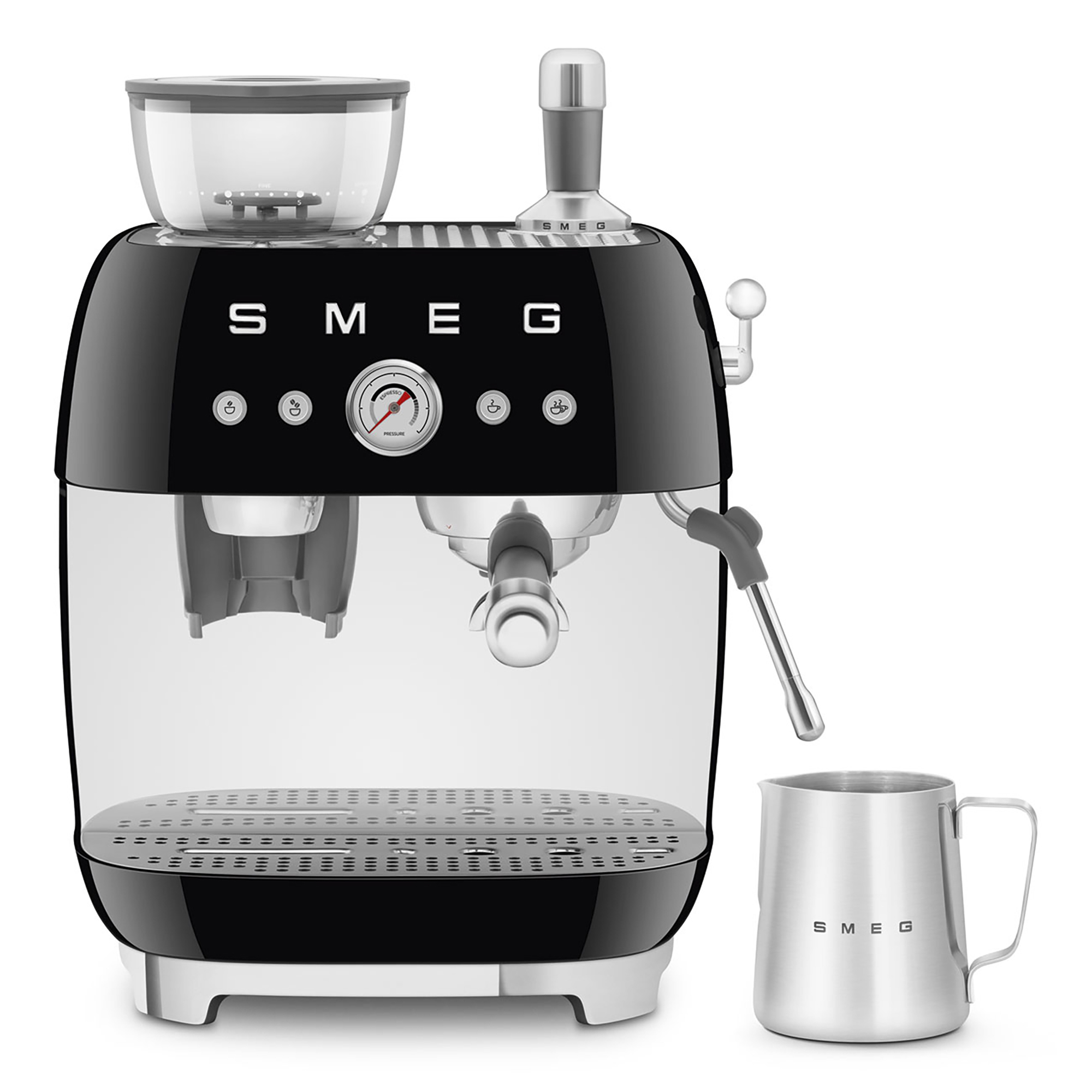
- Dimensions: 44.3cm x 44.3cm x 34cm
- Capacity: 250g Bean Hopper, 2.4L Water Tank
- Wattage: 1650 Watts
- Warranty: 2 Year
- Included: stainless steel portafilter, tamper, stainless steel milk jug, single and double espresso single and dual wall filter baskets, cleaning accessories
- Grind settings: 15
- Options: Single or double shot, hot water, 2 x steam intensity levels for frothing milk
- Adjustable features: auto power-off time, water hardness, coffee temperature, pre-brewing profiles
- Colours: black, cream, pastel blue, pastel green, red, white
Who reviewed the Smeg EGF03 Espresso Machine?

After completing a Home Economics degree, Helen went on to work for the Good Housekeeping Institute and has been reviewing home appliances ever since. She lives in a small village in Buckinghamshire in the UK, where she reviews all sorts of home and garden appliances using her wealth of experience.
Helen drinks espresso based coffees every day and so simply used this machine in place of her usual model for a week. She enjoyed experimenting with the different grind sizes and settings to see what could be achieved. Smeg loaned her the coffee machine and she sent it back at the end of the review period.
Unboxing, setting up and first impressions
The box that showed up on my doorstep was bigger than I anticipated and getting the chunky machine out required a bit of manhandling. There was a very minimal amount of non-recyclable packaging, which is not always the case when unboxing big, expensive coffee machines. Since the brands often assume they need to be protected by hard-to-recycle chunks of polystyrene.
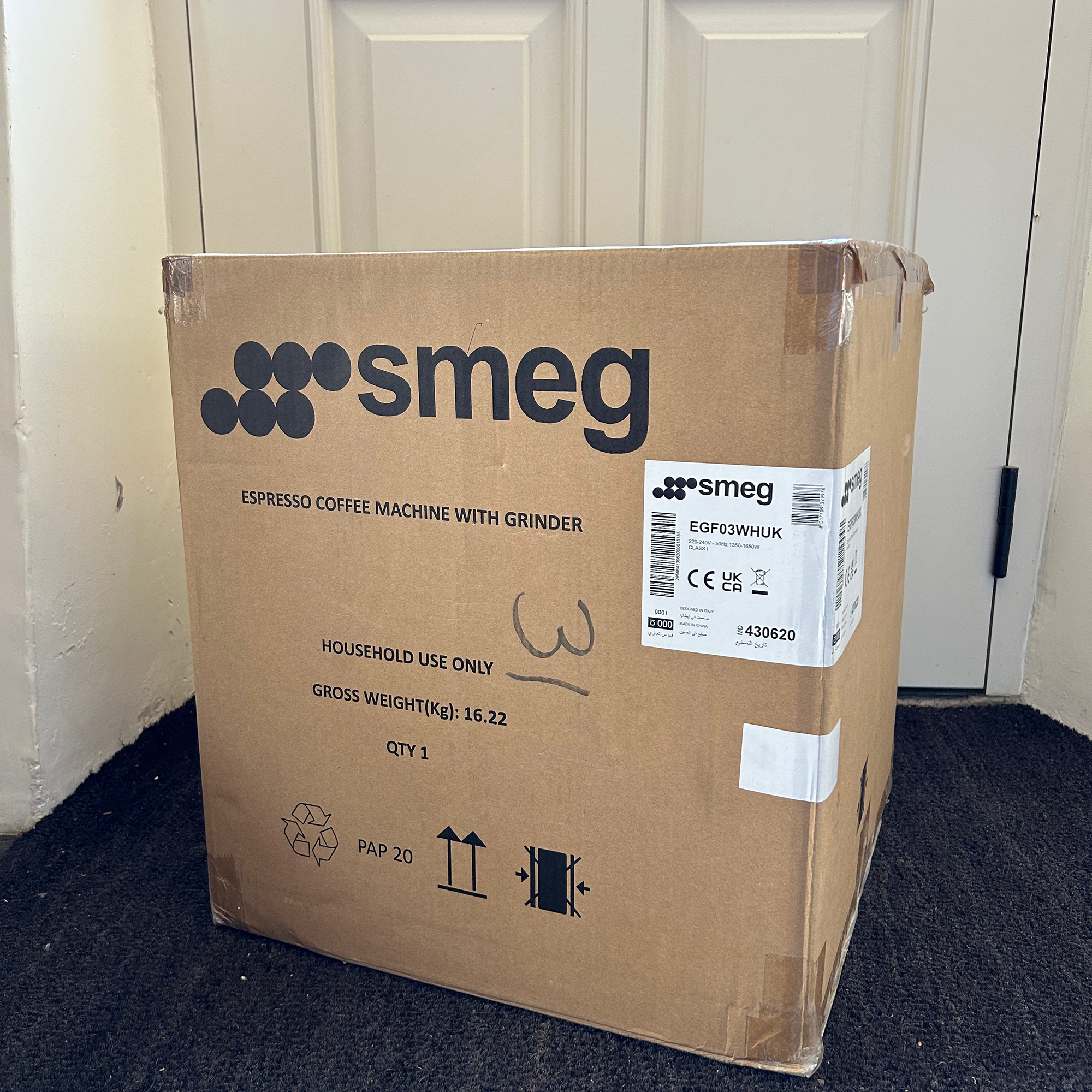
As I unpacked accessories like the tamper and portafilter, I was very impressed by the robust, weighty quality to it all. I slotted the bean hopper into place and noted the lid has a good seal that’ll help keep the coffee beans fresh. It’s also the perfect size for a 250g bag of beans, which is the size you get from most speciality coffee subscription companies.
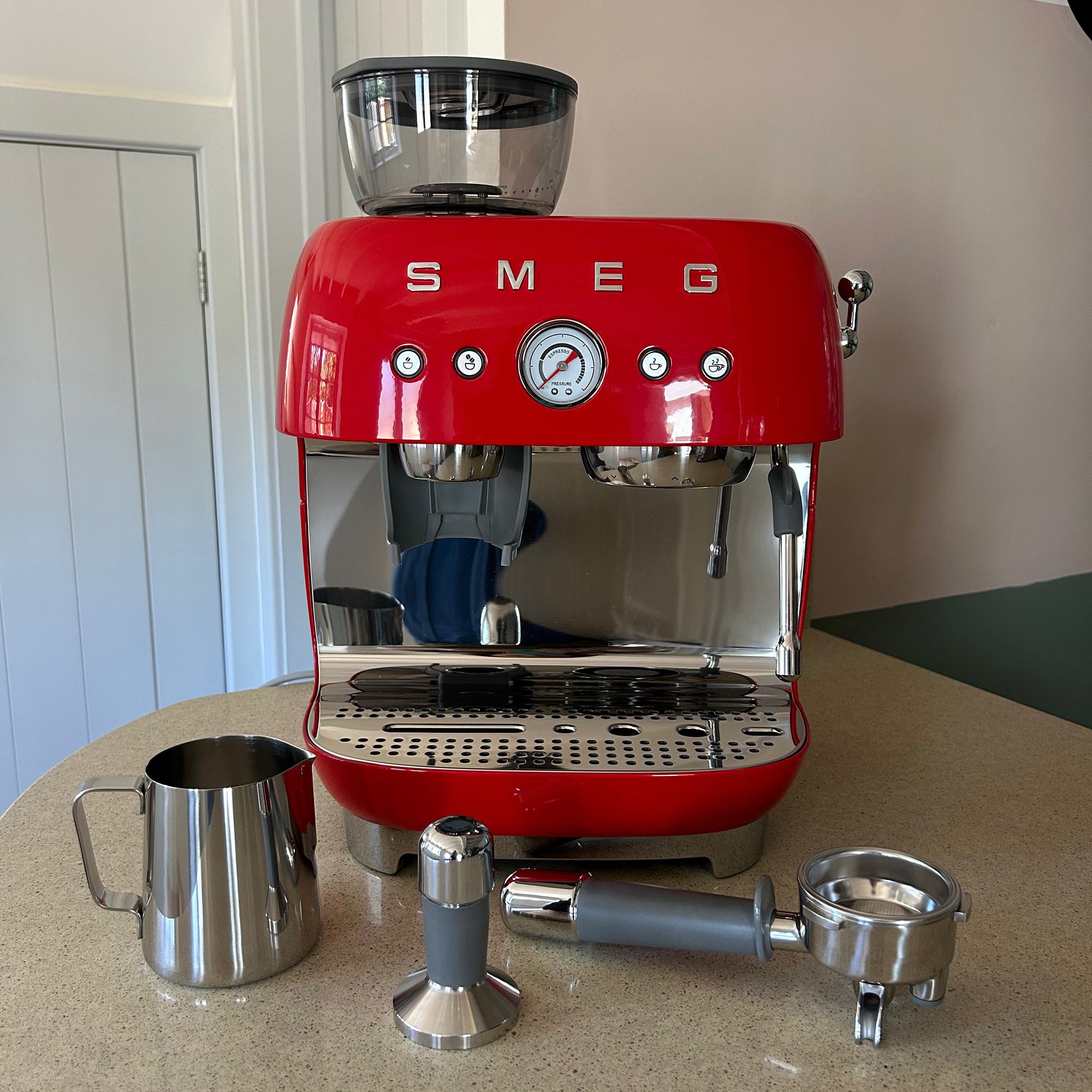
At the back sits the ginormous 2.4 litre water tank, which is easily removable so you can fill it at the sink. Alternatively, leave it in place and simply remove the lid to pour water in from your water filter jug. On that note, there isn’t an option to install a water filter into the water tank - you do get this with some other expensive coffee machines, but personally, I have a water filter jug, so even if it did have this option I wouldn’t waste money on the additional filters when I already have filtered water.
There is no requirement to use filtered water though. When setting up the coffee machine, you can adjust the water hardness and if you set it to hard water or very hard water, it’ll increase the frequency of the descale alerts, to ensure it stays in tip top condition.
Sign up to our newsletter for style inspiration, real homes, project and garden advice and shopping know-how
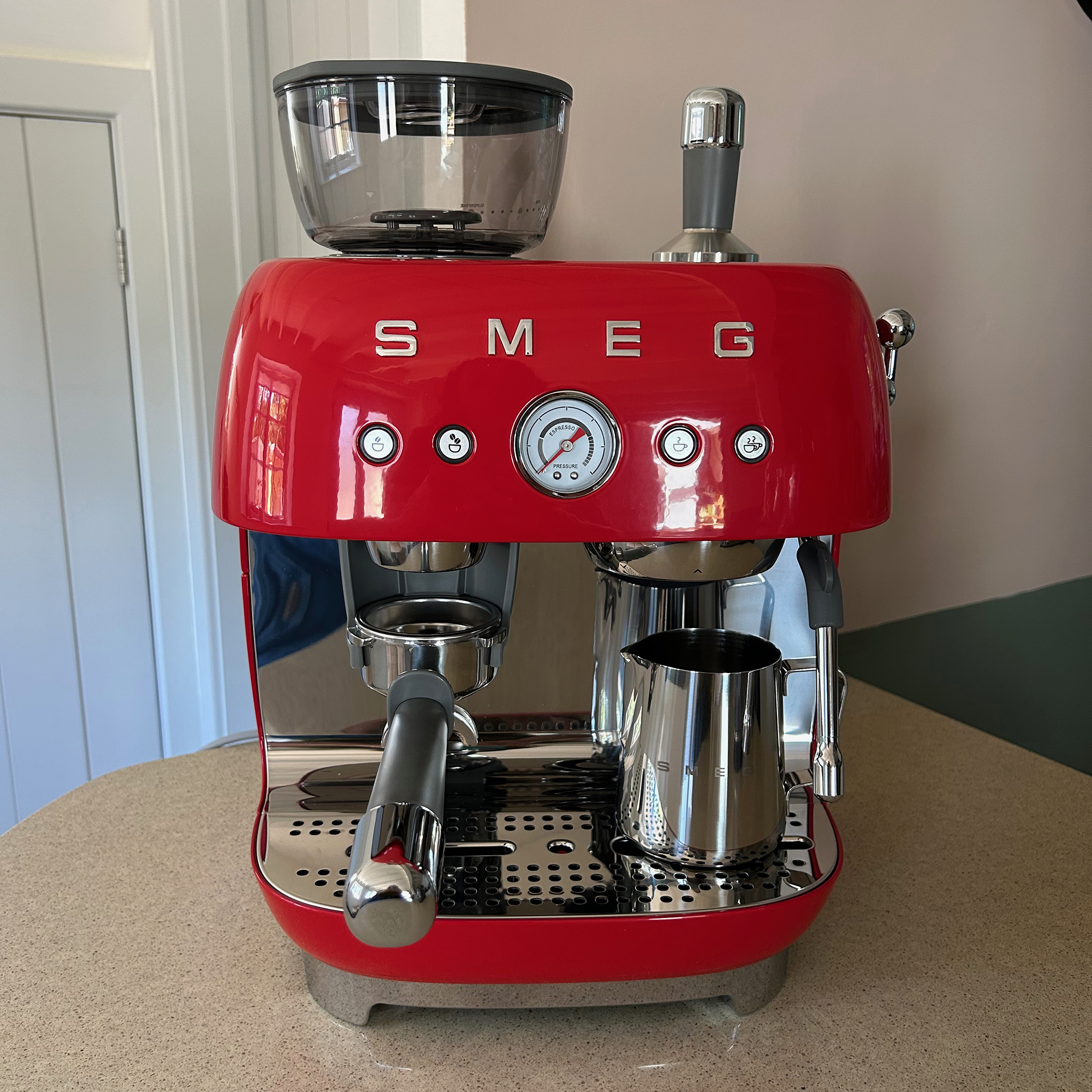
At the side there’s a really tactile lever, pushing it back dispenses hot water from the steam wand. Or if you pull it towards you you’ll get steam for frothing milk. And unusually, there are two steam levels, a lower one for less frothier milk that’s suited to drinks like a latte or flat white, or a higher froth level for cappuccino style milk.
The milk wand can be angled out to make it easier to place into the milk jug, but it doesn’t have quite the level of movement that my usual milk wand has, so I found myself wanting to pull it out further to get the angle I’m used to. But I’ll admit, that’s quite a subjective niggle.
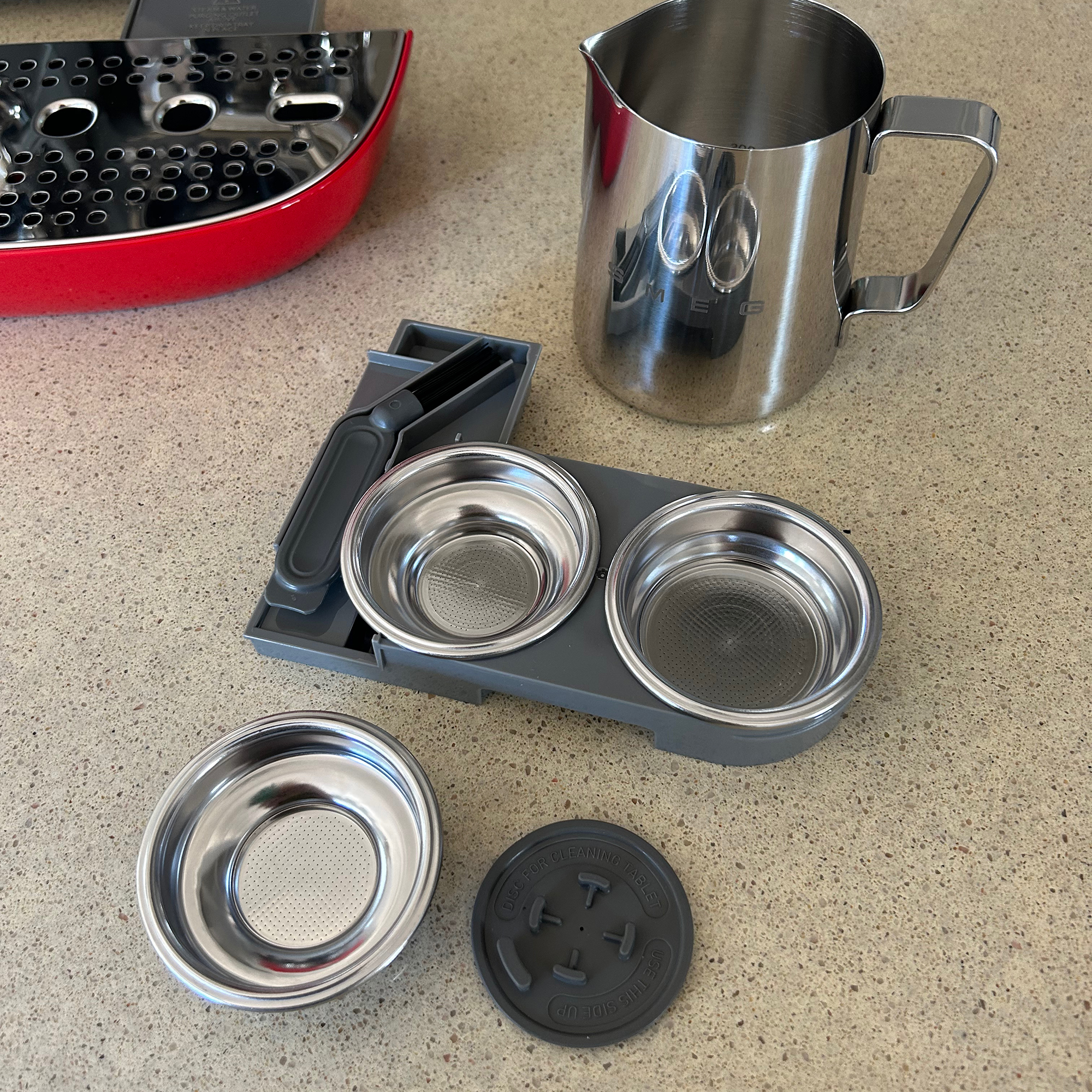
The 15 coffee grind settings are selected and adjusted very easily by twisting the bean hopper. Then when the portafilter is in the cradle below the hopper, you just press either the single or double espresso button to dispense the required amount of coffee, before manually tamping. After that it’s a case of slotting the portafilter into the brew position and again, selecting either a single or double shot. And since there are only four buttons on the front of the machine, the control panel really couldn't be simpler.
Aside from adjusting the water hardness, you can also select the auto power -off time. It defaults to 10 minutes, but you can extend this up to 30, 40, or 60 minutes in the settings - though I’m really not sure why you’d want to. In terms of coffee brewing there are only two adjustable settings; you can choose between four coffee temperatures and four pre-brewing profiles.

The pre-brewing profiles are short, standard, long or gradual. Pre-brewing is when a small amount of water is poured onto the coffee puck before the actual brewing process. A bit of googling will tell you that pre-brewing or pre-infusion promotes even coffee extraction. But I would have liked some information in the coffee machine manual to tell me the differences between the four settings and how they’re likely to impact the final espresso.
For the portafilter there are two single shot size filters and two double shot filters. The differences are that one of each is a double wall pressurised filter designed for pre-ground coffee and imperfect grinding or tamping. Whereas the other two are single wall filters that allow for more experimentation between grinding, dosing and tamping. The ones you’re not using store in a neat little caddy beneath the drip tray.
Editor's note: Since publication, SMEG has updated its manual for this machine to include more information on the difference between settings.
What is it like to use:
Getting the grind right
It’s typical when setting up this type of coffee machine, to expect a few failed coffees while adjusting the grind settings and getting used to the pressure required when tamping the coffee. I landed on grind level two which is just above the finest grind level; zero.
The thing when using a very fine grind is that you have to be relatively gentle with the tamping. But once I’d got the tamp pressure right, I was able to produce fantastic espresso with a thick crema.
My only issue was that it seemed like there wasn’t enough coffee being dispensed into the portafilter. It turns out (and yes - I geeked out with the weighing scales) that the finer the grind, the less coffee it dispenses into the portafilter.
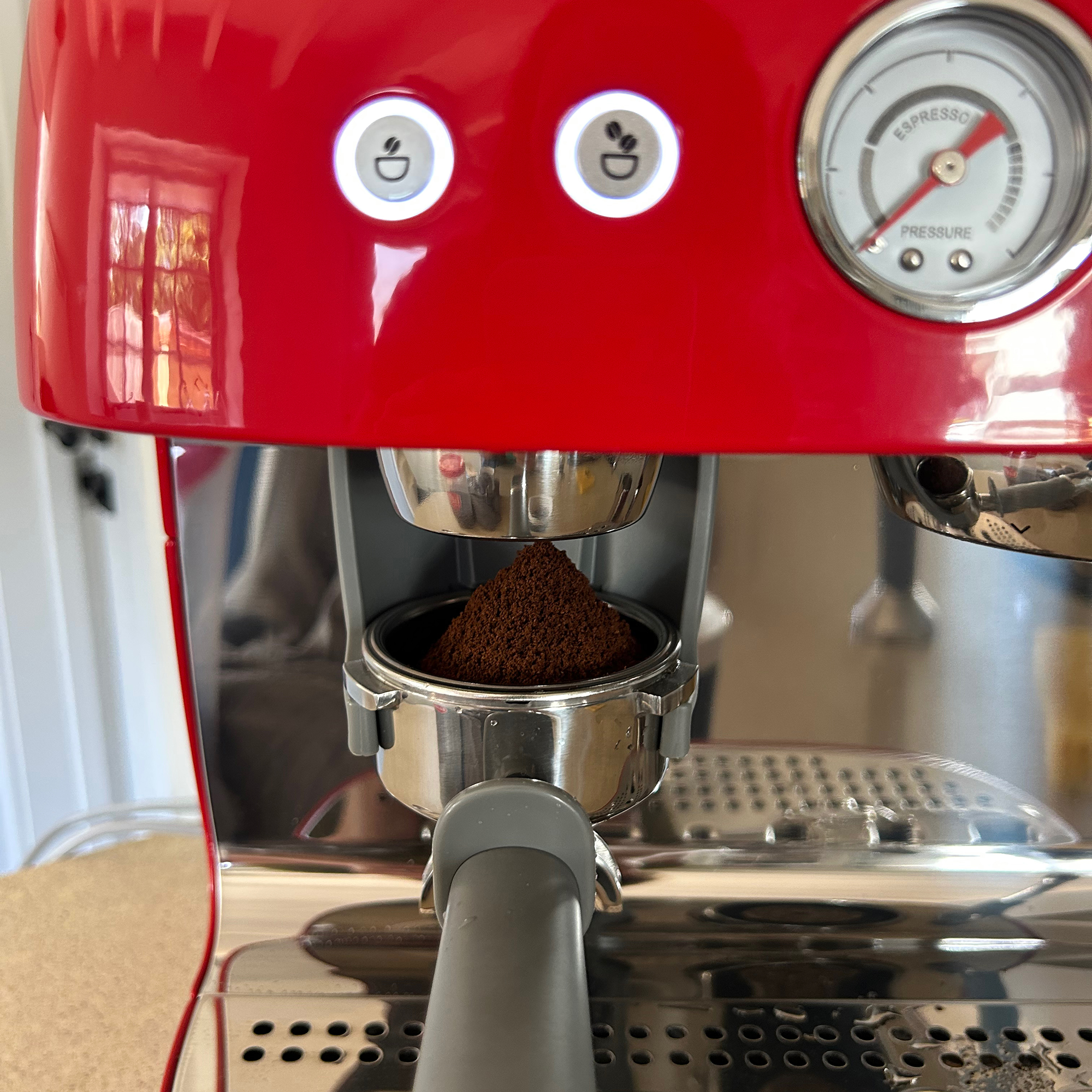
When on the coarsest grind setting, it dispensed 21g and this dropped by a third to 14g when set to a very fine grind. Which is a tad frustrating given that you can’t adjust the dose. The way I got around it in the end was to dispense the double shot quantity and then press the single shot - allow it to grind for around 2 seconds- and then press the button again to stop it. This gave me about 18g of ground coffee.
Now, obviously I would have preferred to be able to adjust the volume of grinds that are dispensed instead of having to figure out a workaround. But, that said, it wasn’t a huge hassle and was worth it for the tasty coffee and rich flavour that I ended up with.
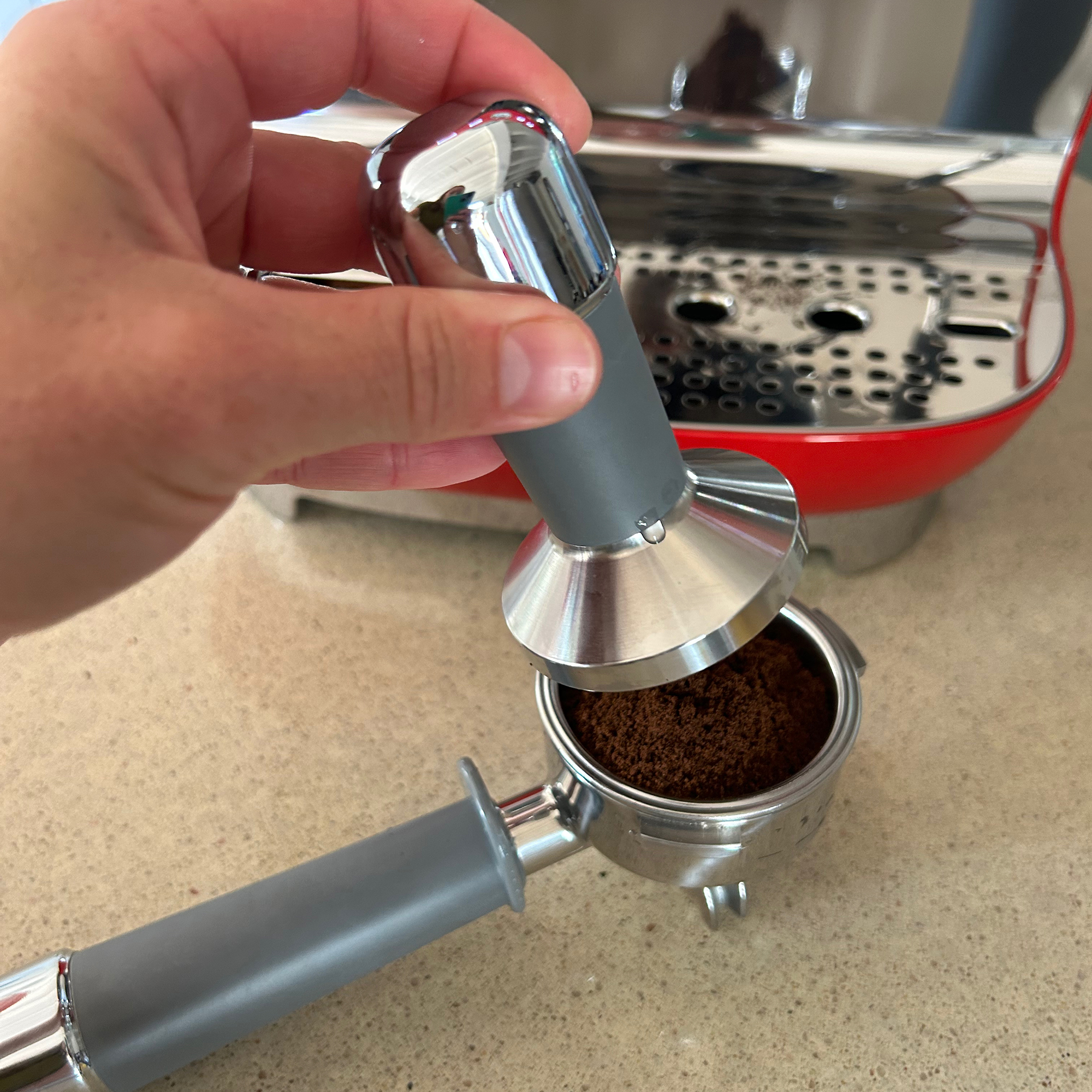
Making espressos
Once the portafilter is twisted into position, you’re just selecting single or double espresso. There’s a pressure gauge on the front that I found helpful when perfecting my settings. You want the needle to rise to about half way.
Too little pressure and the water runs too fast through the coffee, but too much and it struggles to pass through at all. So watching the gauge and seeing the difference in pressure after adjusting the grind size and tamp pressure is super helpful in determining the best settings.
I changed the pre-brew setting from standard to long, I’m not sure it made a huge amount of difference but since I was enjoying the flavour and quality of espresso I left it on that setting.
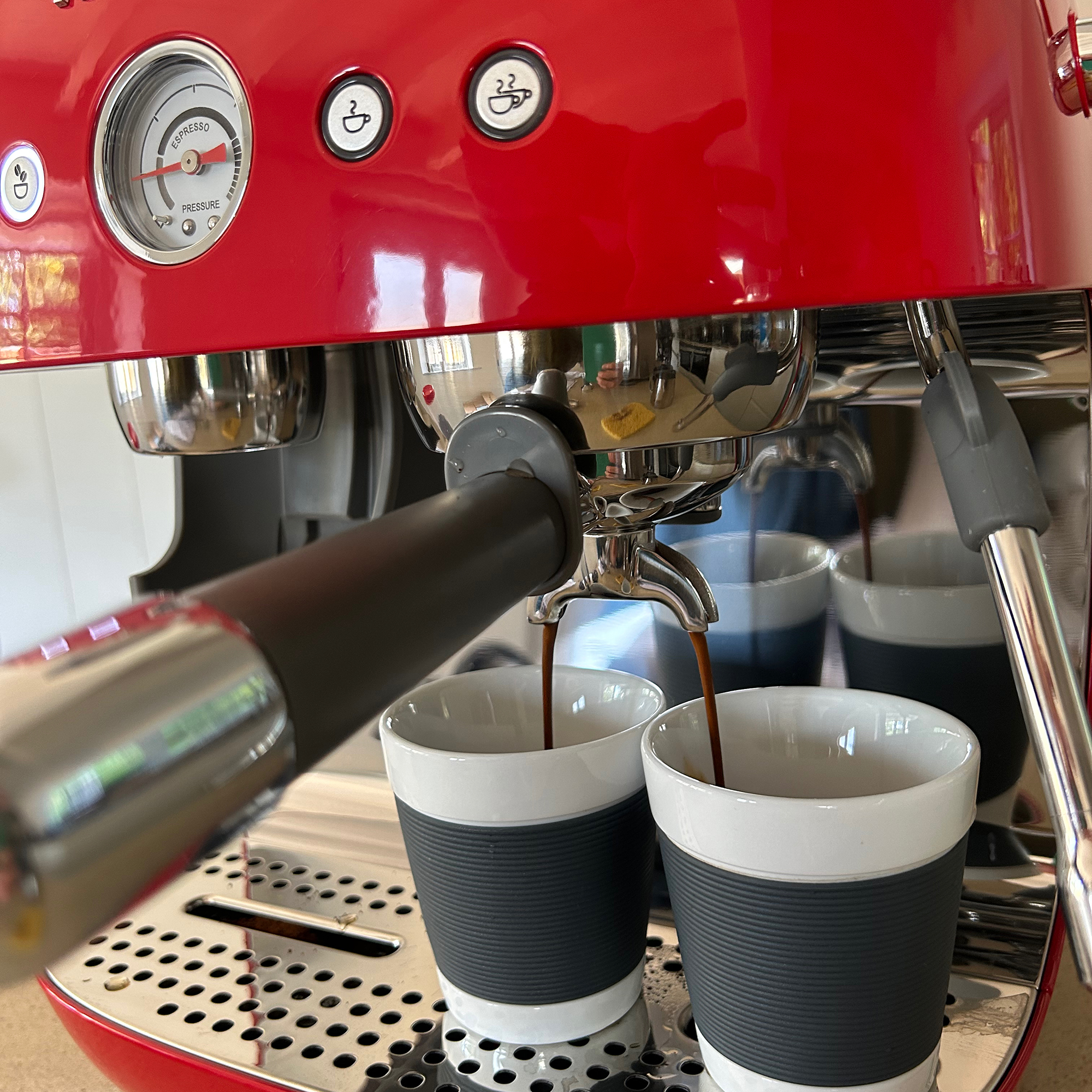
Personally I was happy with the volume of the double shot, it filled my usual espresso cups nicely. But the volume can’t be changed, something to bear in mind if you’re used to dispensing a very specific amount particular to your cups.
I’d say it took me a couple of days and a few rubbish coffees that went down the sink. But once I’d got all my settings sorted I really enjoyed the coffee I made in this machine. The espressos were rich, tasty and not burnt or bitter and had a lovely thick rich crema.
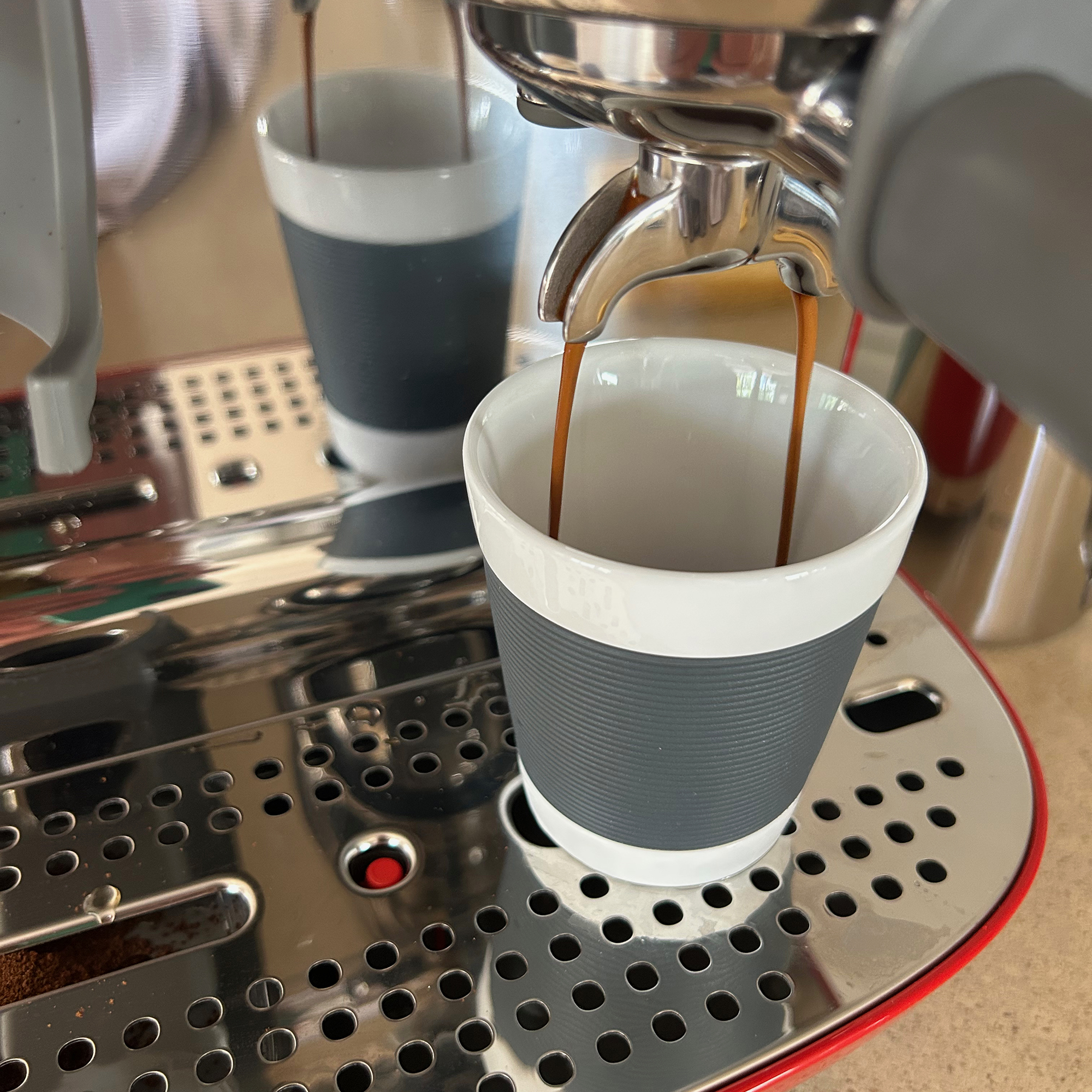
Using the steam wand
There is an art to steaming and frothing milk and it takes practice. The two steam levels certainly take away some of the guesswork, which is perfect for newbies. I tried both and preferred the one that gives a higher froth level. I was quite easily able to create a silky microfoam for cappuccinos, but as I say, if you’re new to it, it may take a little practice.
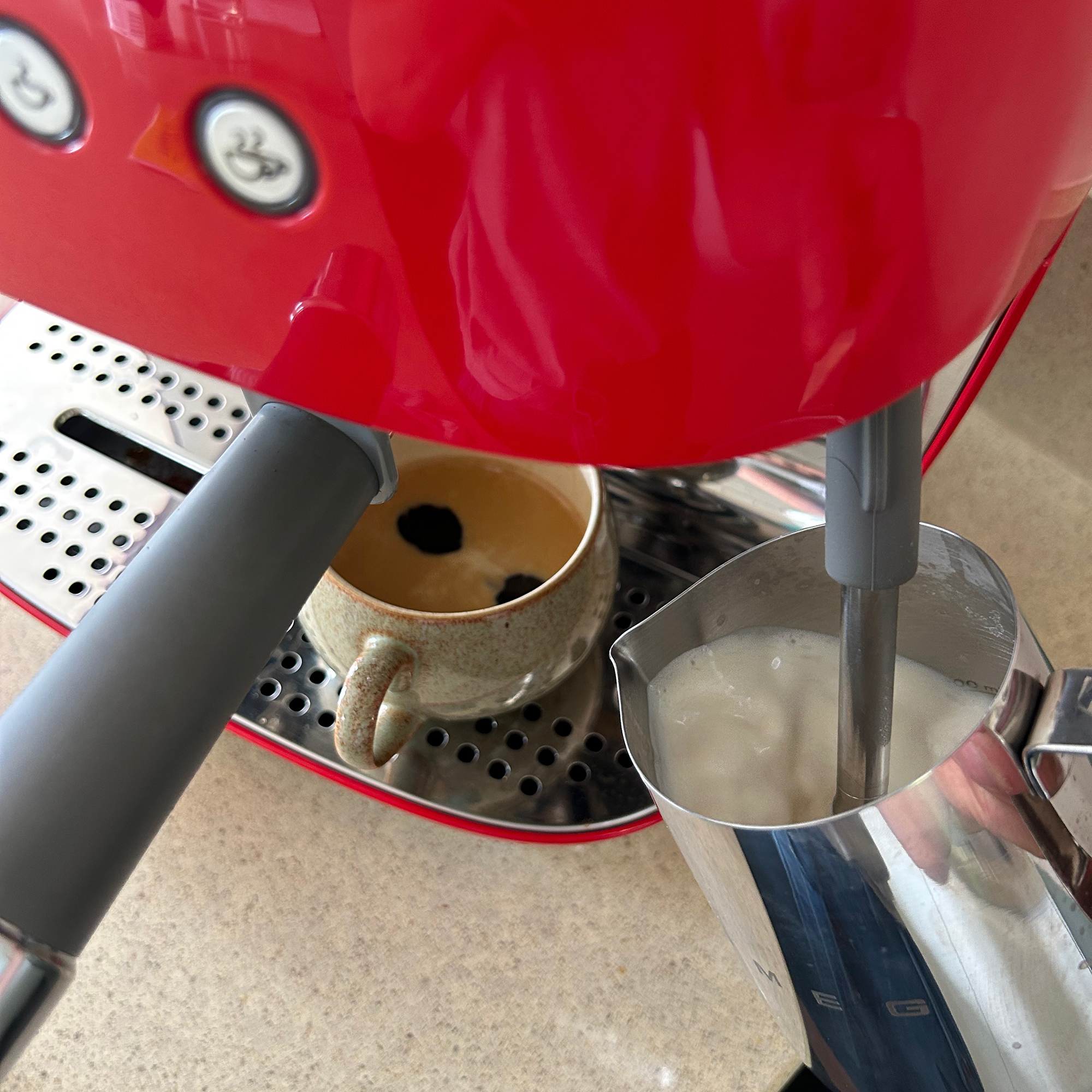
As a Brit, I bung the kettle on when I want a cuppa. I think coffee machines that dispense hot water are more for the American market. But just so you know, I measured the temperature of the water it produces. A full mug of hot water was 78C, so not hot enough for a cup of builders tea, but fine for a green tea.
Editor's note: Since publication, SMEG has also uploaded a series of tutorials to its YouTube channel detailing how to use this coffee machine.
How does the Smeg EGF03 Espresso Machine compare to similar models?
When I started using this machine, it instantly reminded me of the Sage Barista Express Impress. The Sage offers additional features like a whopping 25 grind settings and an in-built tamper. And wannabe baristas will enjoy the option to adjust the volume of coffee poured as well as manual coffee dosing when filling the portafilter with ground coffee. What’s more, at around £730 it is quite a bit cheaper than the Smeg. But, its stainless steel appearance won’t satisfy those looking for a vibrant pop of retro style to adorn the kitchen worktop.
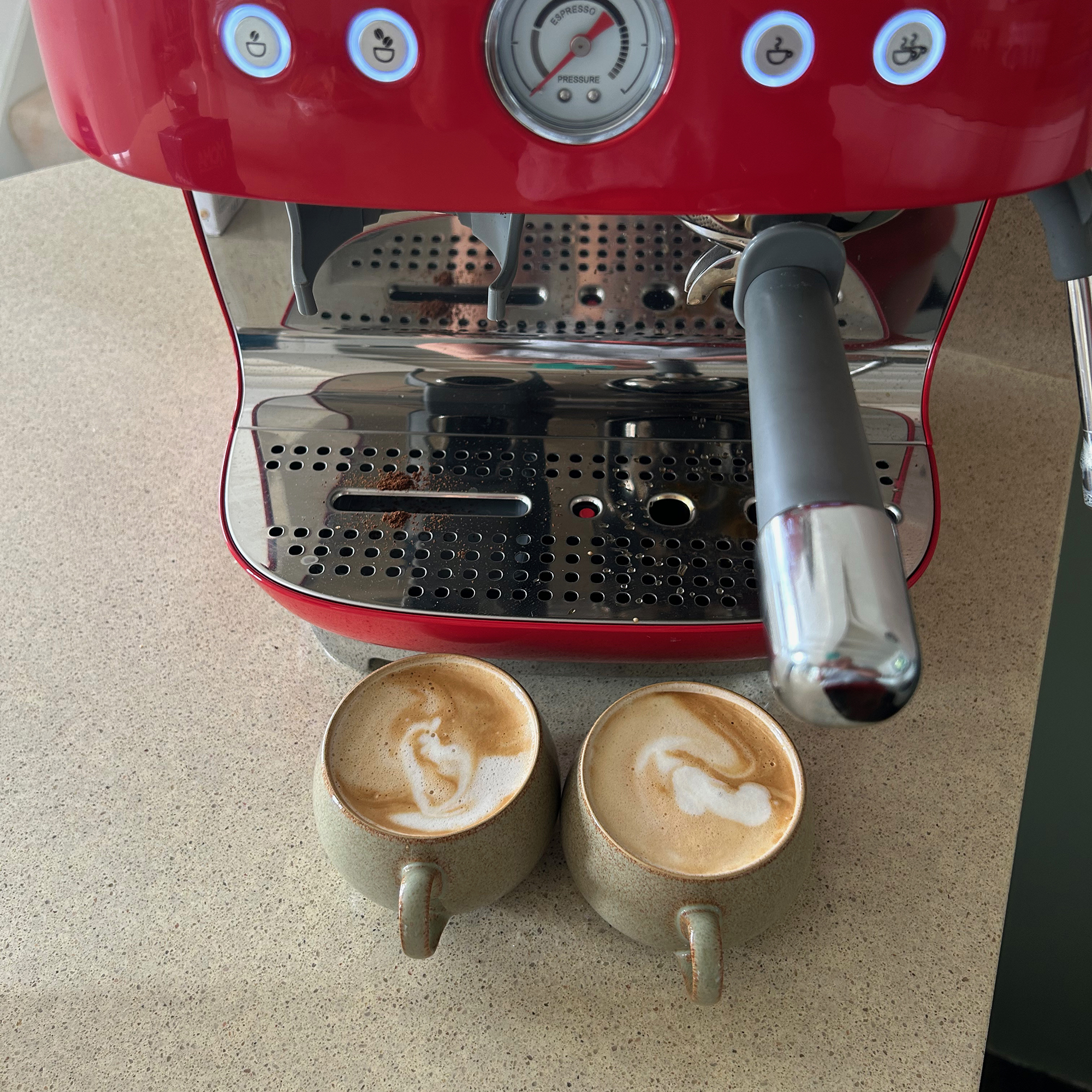
At a similar price level of around £799, the De’Longhi Dinamica Plus offers a slightly different bean-to-cup coffee delivery system. It’s fully automatic, so if the idea of faffing around with grind levels, tamping, and learning to froth milk, doesn’t fill you with joy, this might be a better option. You simply select from the coffee menu and let the machine figure out the rest. But, its appearance is somewhat uninspiring in comparison to the Smeg and while there are plenty of adjustable settings, it’ll be too automated for some.
Cleaning
The daily cleaning of this Smeg coffee machine is much like most other espresso machines I’ve used. I rinsed out the portafilter and gave the steam wand a quick wipe after use. The milk jug and the stainless steel cup tray on top of the drip tray are both dishwasher safe, but nothing else is.
I didn’t bother to empty the drip tray every day, but it did fill up quickly and needed emptying every 2-3 days. All the shiny surfaces, especially the reflective ones, will need to be buffed relatively regularly to keep it looking shiny and pristine.
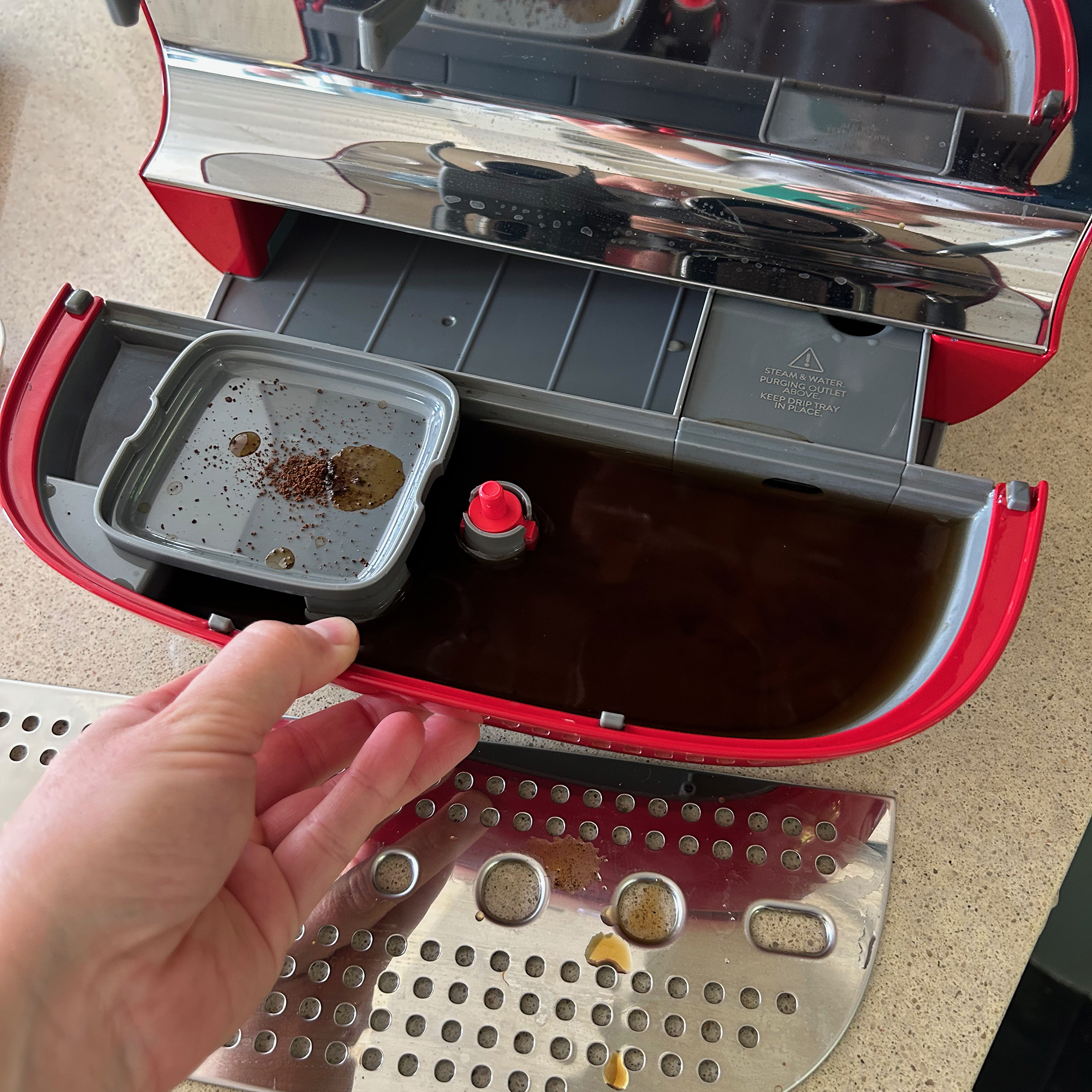
When it needs a descale, it automatically alerts you via an orange light and then it’s simply a case of pressing a combination of buttons and adding a descaling solution. It’ll automatically run through a descaling process. There’s a handy QR code beneath the drip tray that takes you straight on an online guide as to how to descale - helpful if you lose the manual.
Should you buy the Smeg EGF03 Espresso Machine with Grinder?
I think one of the main reasons to buy this coffee machine is the appearance. I love the bold colour and it has a real tactile quality to it. It certainly adds a huge punch of character and pop of colour into the kitchen, just like the smaller Smeg Lavazza A Modo Mio espresso machine.
Appearance to one side though, once you get the settings perfected, it can produce top quality rich espressos and the integrated bean grinder is great. Though I would have preferred a bit more control over some things like the amount of ground coffee dispensed.
However there is no getting away from the price - it is expensive. But as long as you’re okay with the fact that you are paying a premium for the trendy retro style, then go for it. That said, if you’re not overly bothered about the appearance, or you’re a coffee aficionado and you put more value on being able to fine tune every element, then you might be better off with a model that offers more adjustable settings.

After completing a Home Economics degree, Helen went on to work for the Good Housekeeping Institute and has been reviewing home appliances ever since. She lives in a small village in Buckinghamshire in the UK, where she reviews all sorts of home and garden appliances for Ideal Home using her wealth of experience.